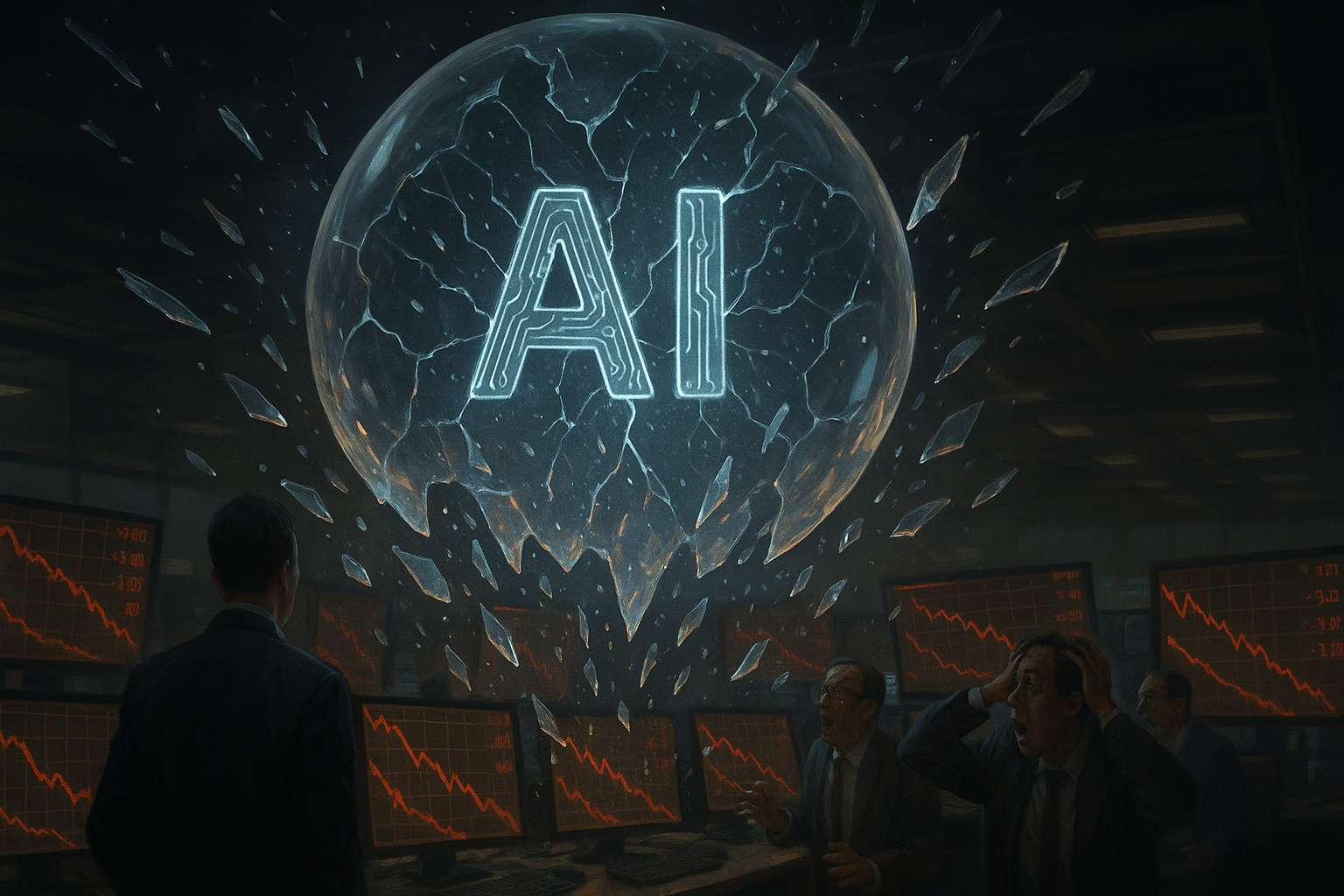So DeepSeek's models challenged the "infinite spending" thesis and suddenly everyone remembered that money, in fact, does not grow on trees—not even AI-generated digital trees. Fascinating how markets work, isn't it? One day we're rushing to pour billions into anything with "AI" slapped on its investor deck, the next we're having a collective moment of fiscal sobriety.
Let's talk about this potential AI bubble, which has all the familiar hallmarks of frothy markets past: eye-watering valuations disconnected from current revenues, promises of paradigm-shifting technology, and the intoxicating belief that this time, surely, it's different.
The Anatomy of Tech Bubbles: A Brief Refresher
I've spent enough time on Wall Street to recognize when we're riding the euphoria elevator. The pattern is almost comically predictable. First comes the legitimate breakthrough (in this case, generative AI). Then the early winners emerge, delivering spectacular returns. Next, investment pours in from everywhere—your neighbor's dentist is suddenly an AI venture capitalist. Finally, reality intrudes, often in the form of disappointing financial results or, as with DeepSeek, the dawning realization that building AI infrastructure costs actual money. Lots of it.
The data from that January 2025 selloff gives us a fascinating preview of what a full AI bubble pop might look like. The market showed remarkable discrimination in its panic, which isn't always the case.
The Likely Losers: Three Categories to Watch
Based on the data you've shown and historical patterns in tech bubbles, I see three categories of potential losers:
1. The Pure AI Plays with Weak Fundamentals Companies like Super Micro Computer (SMCI) and other AI infrastructure darlings that have seen their valuations grow far beyond their current financial realities will likely take the biggest hit. When bubbles pop, the market suddenly remembers to care about boring things like cash flow and profit margins.
2. The AI Toolmakers Your data shows NVIDIA taking a significant hit. This makes sense—they're selling the picks and shovels for the AI gold rush. When miners stop mining, shovel sales tend to decline. AMD fits this category as well.
3. The Overcapitalized Speculators Companies that have diverted excessive resources into AI initiatives without clear paths to monetization will face tough questions from investors. The market will differentiate between companies making strategic AI investments and those simply following the hype.
The Surprising Winners: Defensive Plays and Quiet Innovators
What's most interesting about your data is who didn't get hurt—or even benefited—from the mini AI panic:
1. Traditional Defensive Sectors Utilities, consumer staples, and healthcare held up well, as they typically do during tech selloffs. People need electricity and medicine regardless of whether AI lives up to the hype.
2. Big Tech's Strategic Players Some tech giants remained relatively insulated. This suggests the market is distinguishing between companies with disciplined AI approaches and those throwing money at the problem. Apple and Microsoft have shown restraint in their AI spending relative to their enormous cash positions.
3. The Under-the-Radar Beneficiaries Look at who topped the winners list: Walgreens, General Motors, Etsy. Companies that aren't flashy AI stories but represent value in traditional industries. In a flight to quality, these businesses could continue to outperform.
The Model That Matters: Adoption vs. Monetization
If (when) the broader AI bubble pops, I suspect we'll see a market that's increasingly sophisticated about distinguishing between AI adoption and AI monetization.
The companies that survive and thrive will be those that can clearly demonstrate how AI improves their core business economics—reducing costs, improving products, or creating new revenue streams. The ones that suffer will be those who treated AI as a marketing strategy rather than a business strategy.
Remember, when the internet bubble burst, Amazon still survived—because beneath the hype was a legitimate business model. Similarly, some AI companies today are building real value that will persist long after the market sobriety kicks in.
The Bigger Question: Infrastructure Fallout
The most interesting aspect of a potential AI bubble burst isn't what happens to stock prices but what happens to the massive infrastructure investments being made. Data centers are being built at an unprecedented rate. Chip manufacturing capacity is expanding dramatically. If AI demand doesn't meet expectations, we could see significant overcapacity in these areas, with ripple effects throughout the technology supply chain.
In the end, market corrections aren't disasters—they're recalibrations. They separate companies with sustainable advantages from those merely drafting off market momentum. If you're investing in AI, the key question isn't whether the bubble will pop but whether you're holding companies that will emerge stronger on the other side.
After all, as Warren Buffett reminds us, when the tide goes out, you discover who's been swimming naked. In AI, that revealing moment may be approaching faster than we think.
